Seychelles White-eyes transferred to North and Cousine-Two new islands for the species |28 July 2007
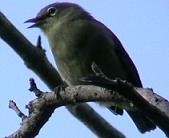
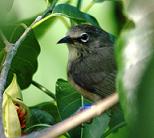 Such transfers aim to create new populations on
Such transfers aim to create new populations on 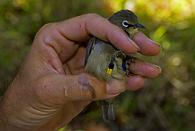 islands with sufficient suitable habitats free of rats and other introduced predators. They are a key contribution to the Species Action Plan produced in 2001 for this Globally Threatened Species, as part of the Seychelles White-eye Recovery Programme started by the Conservation section of the Ministry of Environment in 1998. This initial programme had led to an increased knowledge
islands with sufficient suitable habitats free of rats and other introduced predators. They are a key contribution to the Species Action Plan produced in 2001 for this Globally Threatened Species, as part of the Seychelles White-eye Recovery Programme started by the Conservation section of the Ministry of Environment in 1998. This initial programme had led to an increased knowledge 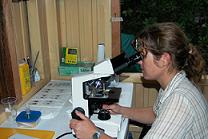 on the status of the species, its ecology and biology, the threats responsible for its decline, and finally its successful introdu
on the status of the species, its ecology and biology, the threats responsible for its decline, and finally its successful introdu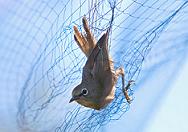 ction in 2001 to Frégate Island, where intensive habitat restoration continues. This resulted in a significant increase of the SWE total population, which stands now at c. 400 birds: about 245 on Conception (before the transfers), 100 on Frégate and 60 on Mahé.
ction in 2001 to Frégate Island, where intensive habitat restoration continues. This resulted in a significant increase of the SWE total population, which stands now at c. 400 birds: about 245 on Conception (before the transfers), 100 on Frégate and 60 on Mahé.
During more than three weeks, a team of trained ringers from ICS, the Ministry of Environment, Natural Resources and Transport (MENRT), and occasionally Cousine Island, 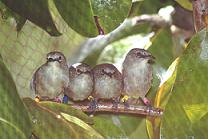 have been camping and
have been camping and 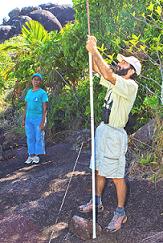 working non stop in the difficult rocky and hilly terrain of Conception to monitor White-eye groups, identify and try and capture the best suitable birds for transfer.
working non stop in the difficult rocky and hilly terrain of Conception to monitor White-eye groups, identify and try and capture the best suitable birds for transfer.
Whenever possible, only birds from known sex and age were selected and one bird only taken from each group to maximise the genetic diversity of the founded populations. Every one other day, up to six birds were transferred to one of the islands. Birds were 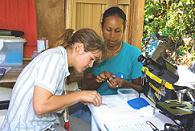 measured and examined, and health screening conducted by ICS Vet Dr Lindy MacGregor to detect external or internal parasites and provide treatment when possible. The discovery of a blood parasite (apparently benign) on a high percentage of the birds originated intense specialist consultations and debate but decision was made to continue the operation.
measured and examined, and health screening conducted by ICS Vet Dr Lindy MacGregor to detect external or internal parasites and provide treatment when possible. The discovery of a blood parasite (apparently benign) on a high percentage of the birds originated intense specialist consultations and debate but decision was made to continue the operation.
Birds were kept in small bags and transferred in the Helibird box, specially designed in 2001 for White-eyes to travel by helicopter in a sound proof and ventilated environment. Logistics were particularly challenging for this operation, 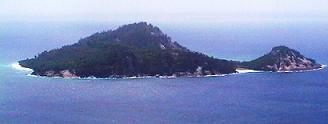 that required 1-2 persons to
that required 1-2 persons to 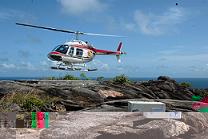 coordinate from Mahé. Access to Conception to supply regularly food and water to 7-8 people could only be done safely by helicopter during the rough South East monsoon trades, as the island has no beaches where boats can land. This was possible thanks to Helicopter Seychelles, that has provided assistance over the last ten years to access Conception, and also to the new Helicopter company ZILAIR, that sponsored several transfers to North Island.
coordinate from Mahé. Access to Conception to supply regularly food and water to 7-8 people could only be done safely by helicopter during the rough South East monsoon trades, as the island has no beaches where boats can land. This was possible thanks to Helicopter Seychelles, that has provided assistance over the last ten years to access Conception, and also to the new Helicopter company ZILAIR, that sponsored several transfers to North Island.
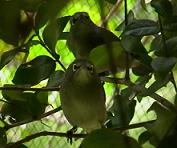 Once transferred, the birds were
Once transferred, the birds were 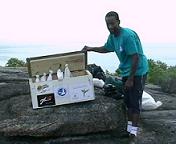 on each island kept for observation in a release cage for up to one day, where they were fed using techniques we had experimented during the Frégate transfers: sprayed sugared water, termites and other insects on sticks with honey, berries of Bois siro and other plants, etc.. A remarkable aviary was build by Cousine Island, where expert Gary Ward (Durrell Foundation / Jersey Zoo, UK) experimented new techniques such as using nectar feeders. Intense post release monitoring by the dedicated island team has provided resightings for almost all the transferred birds, many of which are flocking every evening to sleep together on a same branch. On much larger North Island (201ha compared to 26 ha), where extensive areas are being rehabilitated, White-eyes have dispersed widely but some have already settled in the Takamaka forest of the plateau, with several males showing clear territorial behaviour including singing and courtships indicating their readiness to breed.
on each island kept for observation in a release cage for up to one day, where they were fed using techniques we had experimented during the Frégate transfers: sprayed sugared water, termites and other insects on sticks with honey, berries of Bois siro and other plants, etc.. A remarkable aviary was build by Cousine Island, where expert Gary Ward (Durrell Foundation / Jersey Zoo, UK) experimented new techniques such as using nectar feeders. Intense post release monitoring by the dedicated island team has provided resightings for almost all the transferred birds, many of which are flocking every evening to sleep together on a same branch. On much larger North Island (201ha compared to 26 ha), where extensive areas are being rehabilitated, White-eyes have dispersed widely but some have already settled in the Takamaka forest of the plateau, with several males showing clear territorial behaviour including singing and courtships indicating their readiness to breed.
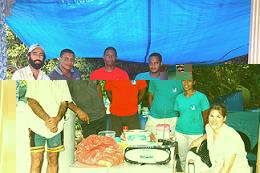
So far a total of 45 birds have been transferred from Conception (25 to North Island and 20 to Cousine), and an extra five birds are planned to be transferred soon from Mahé to Cousine.
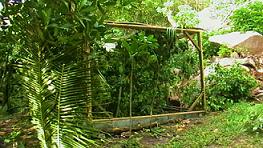 More transfers will be required to help these populations to develop successfully. Mixing White-eyes from Conception and Mahé was recommended to strengthen the stock and create new populations with better fitted birds, as done previously with other endangered species with limited genetic diversity. To increase the Mahé SWE population, ICS has been conducting rat control and habitat improvement on its two main breeding areas, located on the properties of the President of the United Arab Emirates, who supports these initiatives.
More transfers will be required to help these populations to develop successfully. Mixing White-eyes from Conception and Mahé was recommended to strengthen the stock and create new populations with better fitted birds, as done previously with other endangered species with limited genetic diversity. To increase the Mahé SWE population, ICS has been conducting rat control and habitat improvement on its two main breeding areas, located on the properties of the President of the United Arab Emirates, who supports these initiatives. 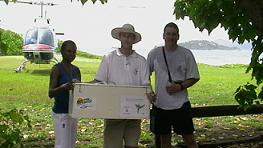 The increased productivity of young gained should now allow transfers of Mahé SWEs to new islands without affecting the tiny and fragile Mahé population. In addition, ICS will soon try to eradicate the Norway rat Rattus norvegicus present on Conception, which predates on the SWE (although not as much as the Ship rat Rattus rattus present in other islands).
The increased productivity of young gained should now allow transfers of Mahé SWEs to new islands without affecting the tiny and fragile Mahé population. In addition, ICS will soon try to eradicate the Norway rat Rattus norvegicus present on Conception, which predates on the SWE (although not as much as the Ship rat Rattus rattus present in other islands).
I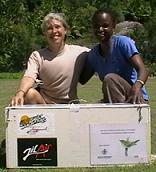 would like to thank in the name of ICS, all partner organisations and individuals that have contributed to the success of these White-eye transfers. Transfers to North Island are part of FFEM sponsored proj
would like to thank in the name of ICS, all partner organisations and individuals that have contributed to the success of these White-eye transfers. Transfers to North Island are part of FFEM sponsored proj ect ‘Rehabilitation of Island Ecosystems’ lead by ICS, and Cousine transfers are supported by a GEF project led by Nature Seychelles. Conservation des Espèces et Populations Animales (France) and Chicago Zoological Society (USA) also provided support to ICS for the transfers. We are now all waiting for the good news that these transferred White-eyes have built nests and started breeding successfully in their new homes.
ect ‘Rehabilitation of Island Ecosystems’ lead by ICS, and Cousine transfers are supported by a GEF project led by Nature Seychelles. Conservation des Espèces et Populations Animales (France) and Chicago Zoological Society (USA) also provided support to ICS for the transfers. We are now all waiting for the good news that these transferred White-eyes have built nests and started breeding successfully in their new homes.
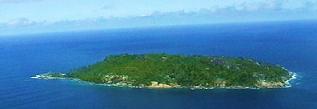
Dr Gérard Rocamora
Science Director
Island Conservation Society






















